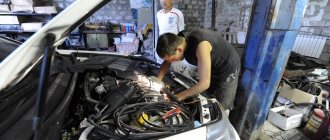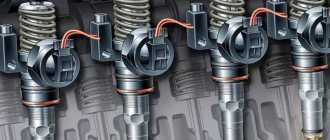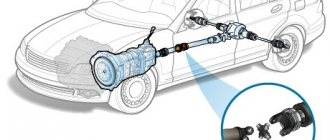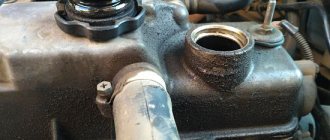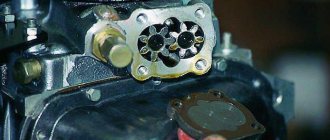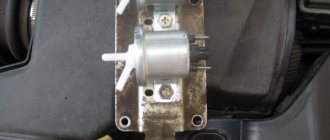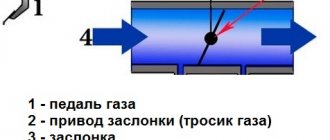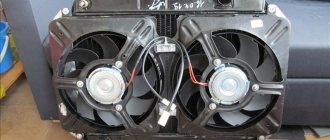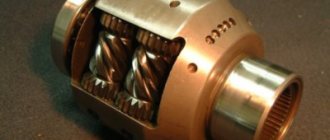The lubrication system of an internal combustion engine is one of the most important solutions in an internal combustion engine. At the same time, the engine oil circulating through the system protects parts from dry friction, preventing rapid wear, overheating and jamming.
Oil also cleans the engine and accumulates natural wear and tear products. To prevent such contaminants from circulating further through the system, a so-called oil filter is additionally integrated into the system.
At the same time, the main tasks performed by oil filters are:
- high-quality cleaning of oil from mechanical contaminants, trapping small particles and wear products;
- maintaining maximum throughput to prevent a critical drop in oil pressure in the lubrication system.
Given these features, it is important to know how an oil filter works, when to change oil filters, and also which oil filter is best to choose for replacement. Read more in our article.
Purpose of the filter in the engine lubrication system
Filter location on the engine
During operation of the lubrication system, oil cyclically passes through the main components and mechanisms of the engine, washing away carbon deposits, soot and other wear products from them. Removed contaminants, along with excess oil, end up in a sump (in wet sump systems) or in a special tank (in dry sump designs). In order for such oil to be used in subsequent cycles, it is very important to prevent waste from being re-entered into the system.
Determining where the oil filter is located in the system is not difficult. It is usually located at the bottom of the engine housing so that it can be easily replaced. Externally, it is a cylindrical body with a thread (black, blue, white or green), inside of which there is a filter element.
Oil filter device
Oil filter design
Structurally, engine oil filters consist of the following elements:
- Cylindrical body with lid. It has several inlet holes and one outlet with threads for mounting.
- Filter element. Detains particles of contaminants, allowing only purified oil to pass further into the system. Most often it is made from special cardboard. To increase the useful area of the filter element, it is folded into an accordion shape or rolled into a roll. For more efficient service, cardboard also has a special impregnation that prevents it from deteriorating under the influence of oil.
- Bypass valve (lower) of the oil filter. In emergency situations, it redirects the oil flow directly into the system, bypassing the filter element. The logic is simple - it is better to run the engine on unrefined oil than without it at all. This situation can arise, for example, in winter: due to low temperatures, the oil becomes more viscous and therefore cannot pass through the filter element until the engine reaches operating temperature. Or the valve is triggered if the filter element is “clogged” and cannot cope with the volume of oil passing through.
- Check valve (anti-drainage). Prevents oil from draining from the system back to the filter. This is done to instantly supply oil to the rotating parts when the engine starts.
- Pressure spring. Holds the check valve when the engine is off.
- Seal (rubber gasket). Necessary to ensure that oil does not leak out at the mounting points.
In practice, the operating principle of a standard oil filter is as follows: when the engine starts, the pump begins to suck engine oil from the sump (tank), which passes into the holes of the filter element and then enters the lubrication system line. Carbon particles, soot and other waste are retained in the filter.
What is it made of?
Often we see a metal case, which is made in the shape of a cylinder. The upper part is just a dome, but the lower part has small holes in a circle, as well as a central one for threads.
But the filter element is not visible, it is located inside.
To be honest, the oil filter element is a very simple design; all the main work is done by special paper, which acts as a filter. It is located inside our cylindrical body, it is simply locked there.
There are also two valves - an anti-drainage valve (which prevents oil from flowing out of the filter) and a bypass valve (it relieves pressure when the oil is cold and cannot be filtered properly through the paper).
Here's the whole device, let's repeat it again:
- Filter element, usually special paper
- Two valves, bypass and anti-drainage
- Cylindrical, metal body
- The lower part has special holes through which dirty oil enters and clean oil is supplied; the central hole also serves for fastening (a thread is cut into it)
Types of engine oil filters
Full-flow and combined lubrication schemes
The main parameters when choosing a filter are throughput (how much oil passes per unit of time) and its volume (size). These characteristics determine how quickly and how effectively the cleaning will be performed. Depending on the design of the oil filter and its installation scheme, three groups of devices are distinguished:
- Flow-through (full-flow). The most common option. It has a simple design and is installed in series with other elements of the lubrication system. This means that all the oil sucked in by the pump passes through it, and cleaning is carried out as quickly as possible. When such a filter becomes clogged, the bypass valve is activated and the full amount of unrefined oil enters the engine.
- Partially flow-through (partially flow-through). It is connected to the system in such a way that only part of the oil passes through it. The advantage of this installation scheme is better cleaning. On the other hand, the rate of oil passage into the system decreases.
- Combined filtration scheme. It is used primarily on diesel engines. In this case, both full-flow and partial-flow filters are installed in the system. Up to 90% of the lubricant passes through the first, while the second cleans only 10%. This allows you to get the advantages of both schemes: high quality cleaning and motor protection.
In addition, there are:
- disposable structures (non-removable);
- collapsible oil filters with a replaceable filter element.
Disposable and collapsible oil filter
Externally, these designs are almost the same, but the collapsible one has a special nut on the top cover. It unscrews and allows you to wash or replace the inside of the filter.
Centrifugal oil filter
In addition to the listed types, centrifugal oil filters can be used in the lubrication system of heavy vehicles (tractors, SUVs, construction equipment). Structurally, they consist of a housing, inside of which there is a rotor and an axis. Oil is pumped into the centrifuge through holes in the axis (radial and longitudinal). This ensures that lubricant reaches the rotor.
Since the oil supply speed is high enough, it hits the centrifuge lid and causes the rotor to rotate under the action of reaction forces.
The centrifugal force that arises at this moment pushes impurities and contaminants out of the oil, which are retained in the form of sediment on the filter cover. After this, the purified engine oil is supplied to the main line of the system.
How does it work?
The operating principle is simple. Dirty oil enters through small holes that go in a circle; it is pumped into it by an oil pump, which pumps lubricant from the engine sump. Next, it “bends” the anti-drainage valve and passes into the cavity between the paper and the filter element. It is worth noting that if the anti-drainage valve does not work as it should, or is torn (collapsed), your pressure lamp will light for several seconds when it is cold . Follow the link, in that article we discussed the problem in detail.
If the lubricant is hot, that is, heated up by the engine, then it begins to filter through the paper, leaving particles of dirt, shavings, etc. on the paper.
If the lubricant is cold (especially in winter), then its throughput drops significantly, because it is thick and cannot properly pass through the paper part. Therefore, the bypass valve opens; it opens only when the pressure in the filter rises above 0.8 atmospheres. And the oil passes through it.
After heating up to + 60, +80 degrees Celsius, the lubricant becomes liquid and is already able to seep (filter) through the surface. Therefore, the bypass valve closes and the filtration process continues in full.
After filtration has occurred, clean oil is discharged into the central main hole and then enters the engine.
Service Features
As a rule, replacing the oil filter (filter element) is carried out simultaneously with changing the oil, but this is not a necessary condition. According to manufacturers' recommendations, the oil and filter need to be changed every 10-15 thousand kilometers of the car. In practice, it is better to do this more often: approximately every seven thousand. When operating in difficult conditions, as well as when using low-quality fuel or oil, the replacement interval should be reduced by 30%.
For passenger cars, normal filtration is considered to be the retention of 50% of solid fractions larger than 45 microns or 0.05 mm.
To accurately determine the service life, you need to take into account the type of oil filter, as well as its brand. Non-original components will last much less, and sometimes you will need to replace a fake oil filter every 2-3 thousand kilometers. The problem lies in the quality and quantity of the filter element, on which illegal manufacturers try to save. Of course, the original oil filter is more expensive, but it also lasts much longer.
Oil filter removal wrenches
To replace the engine oil filter, it must be removed from the engine, which can be difficult to do, since the sealing ring often “sticks” to the engine crankcase under the influence of high temperatures. To solve this problem, special keys are used:
- A special coupling head (has a certain size) is the most correct way.
- A spanner wrench has a movable rounded grip with teeth.
- The key is in size - it is a round clamp with notches of a fixed size. This key is selected for a specific filter model.
- The crab key is a universal option that has three legs that wrap around and clamp the body.
In addition to keys, belt and chain type pullers can be used, which are placed over the body and tightened tightly. If there are no special tools, there are ways to unscrew the oil filter without using a key:
- Rope (belt) and lever. The filter is wrapped first and a lever is tied, which can be a screwdriver or wrench.
- Screwdriver and hammer. This method is used for disposable structures. The housing is simply pierced with a screwdriver, which is then used as a lever for unscrewing.
The normal condition of the engine oil filter will ensure proper operation and long service life of the car engine. Do not neglect timely replacement and use of original parts.
Filtration principle
In 75% of engines, the oil filter is positioned with the thread down, so it works as follows:
- under pressure from the oil pump, the check valve membrane is raised;
- the working medium enters the filter cartridge;
- there is no pressure when the engine is turned off;
- The oil contained inside the filter presses on the membrane from above, closing the check valve with its own weight.
Operating principle of the oil filter
The bypass valve spring is designed for a certain pressure inside the system. This bypass unit is necessary every time you start the internal combustion engine, when thick, cold oil cannot yet pass through the filter curtain material. To avoid oil starvation of the motor, the bypass valve opens slightly and lubricant enters the internal combustion engine, bypassing the filter cartridge.
The system operates in a similar way when the curtain is completely clogged until the filter is replaced during maintenance.
Attention: There are filters without a check valve or bypass valve and without them at all. This is not always a counterfeit or fake, since in some engines they are mounted with the thread upwards, the check valve becomes unnecessary. In other engines, for example Renault Logan, a pressure reducing valve is already built into the oil line of the lubrication system, so there is no need for a bypass device for the filter itself.
Filter Mann W 712-75 without bypass valve
Paper curtain
When supplying engine oil filters, manufacturers follow industry and government standards. Some characteristics, for example, the opening pressure of the bypass valve, are regulated by technical specifications.
Only companies whose products comply with international standards - ISO 4548 are suitable for the definition of leading brands. The human eye distinguishes hair with a thickness of 70 microns and 40 microns, but in the latter case it is already at the limit of visibility. Without a microscope, a person will not know what bacteria 2 microns in size and soot particles 0.6 microns in size look like.
Curtains of filter elements made of pleated and corrugated paper trap contaminants up to a maximum size of 40 microns. To increase filtration efficiency, synthetics are used.
Paper cartridge and case filters are always the main ones, that is, full-flow. Synthetic curtains take a long time to filter, so they are used in partial flow modifications.
With a two hundredfold magnification of the structure, you can compare the difference between paper and synthetics (left, right, respectively).
Structure of filter materials
The main differences between paper filters are:
- the presence inside a protective cage that retains pieces of paper when the cartridge is destroyed;
- Curtain ribs can be straight or zigzag, and can have different densities and quantities.
Cassette without protective clip
Zigzag filter fins
Unfortunately, it is almost impossible to see the density and number of curtain fins through the threaded hole. But when compiling the next rating, experts cut non-separable cases and evaluate the specified parameters, making the information accessible to users.
Synthetic cartridge
Synthetics have recently been used in cartridges. For example, an option with a filtration degree of 10 microns was found only in the DC line of the manufacturer VIC. It is quite logical that the cartridge is designed for oils with low viscosity, and the product life is 6 thousand kilometers maximum.
Synthetic curtain material
